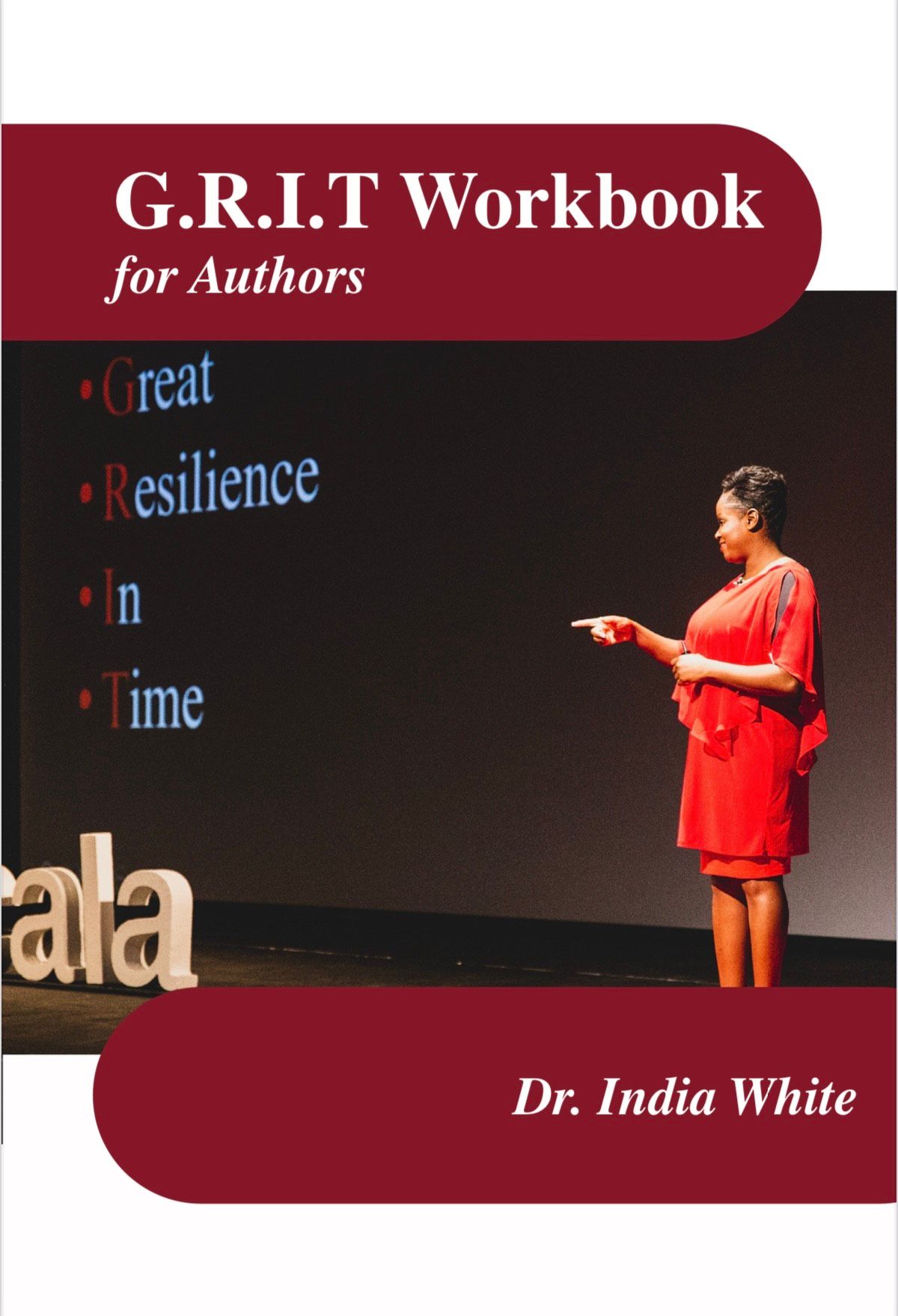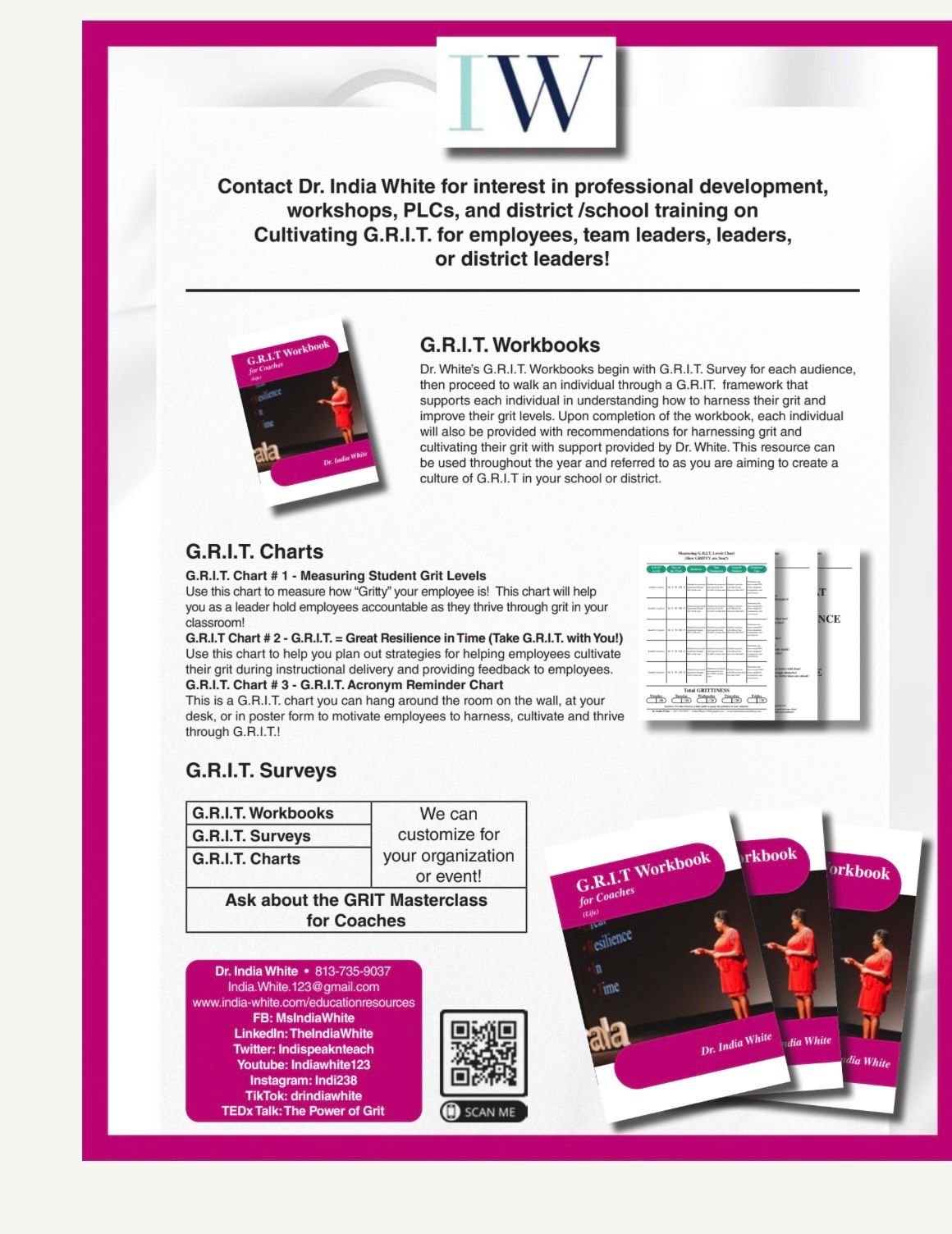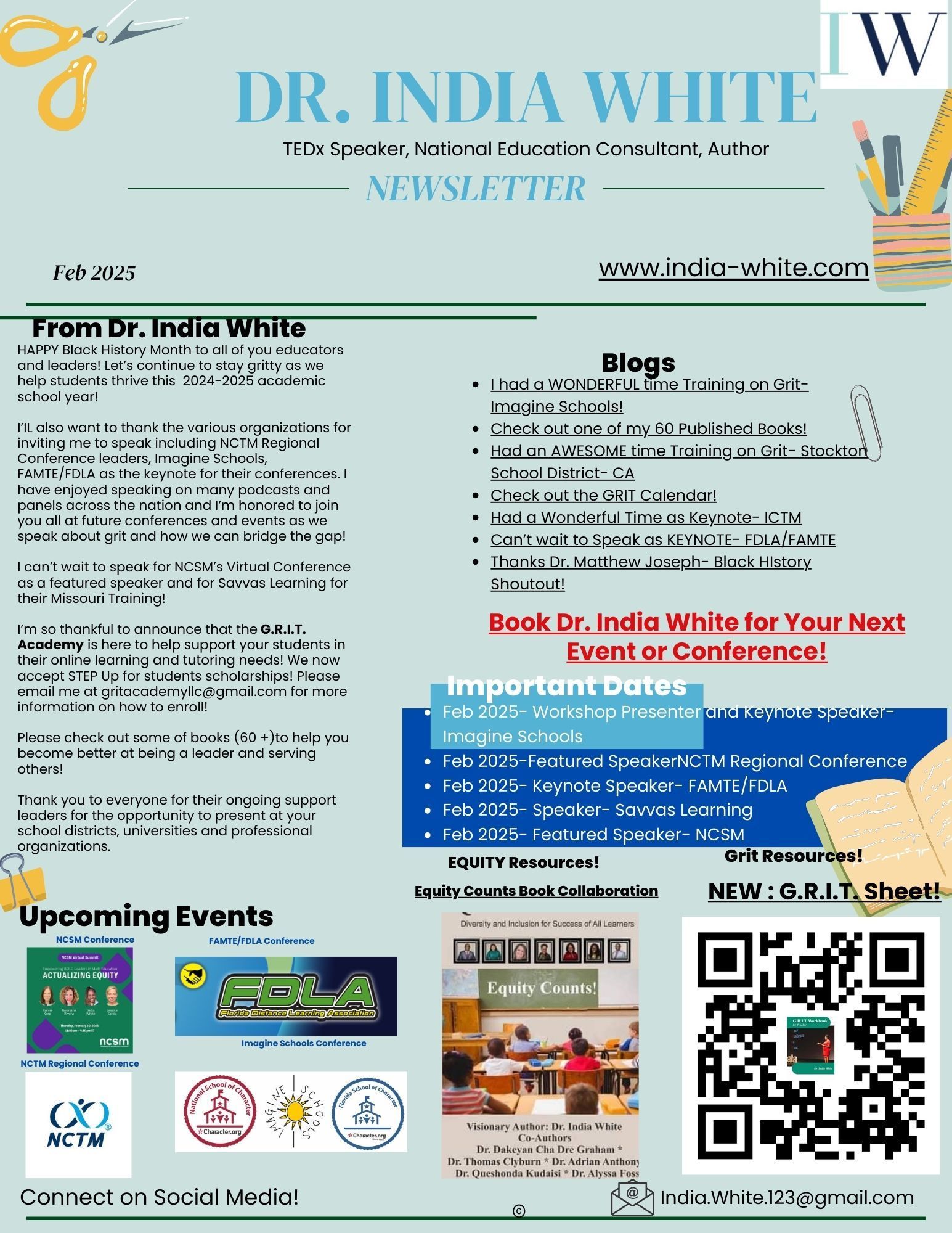Blog Layout
Building Math Fluency through Grit! 3 Tips for Teachers!
India White • October 23, 2024
Building Math Fluency through G.R.I.T.!
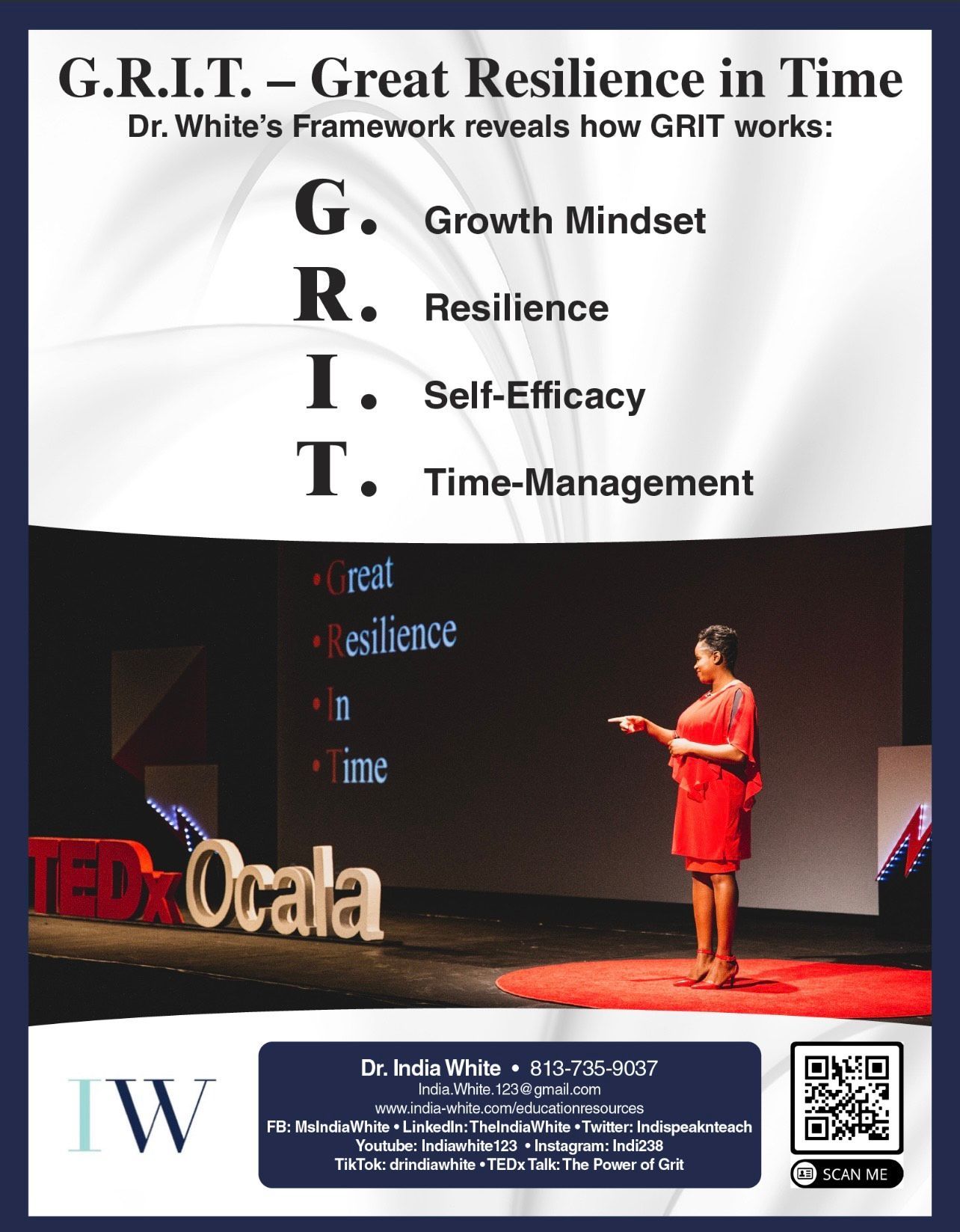
Building Math Fluency and Grit in Students: 3 Tips for Teachers
In today’s educational landscape, fostering both math fluency and grit in students has become essential for their success. Math fluency refers to the ability to perform mathematical operations quickly and accurately, while grit encompasses perseverance and resilience in the face of challenges. Together, these skills empower students to tackle complex problems and develop a positive attitude toward learning.
Here are three effective strategies for teachers to nurture these attributes in their classrooms.
1. Incorporate Daily Math Practice Research Insight
According to the National Council of Teachers of Mathematics (NCTM), regular practice is key to developing fluency in mathematics. Daily math exercises can help students internalize concepts and enhance their ability to apply them in various contexts. Implementation Tips: - Math Warm-Ups: Begin each class with a brief, engaging math warm-up that includes a mix of problems—some familiar and some that challenge students’ understanding. This can include quick mental math exercises, math puzzles, or interactive games. - Fluency Stations: Set up stations with different activities focusing on specific skills, such as multiplication facts, addition/subtraction fluency, or word problems. Rotate students through these stations to keep them engaged and provide varied practice opportunities. By incorporating daily practice, students will build confidence and improve their speed and accuracy, which are crucial for developing math fluency.
2. Cultivate a Growth Mindset Research Insight
Carol Dweck's research on growth mindset shows that when students believe their abilities can be developed through hard work and dedication, they are more likely to embrace challenges and persist through difficulties. Implementation Tips: - Model Growth Mindset Language: Use language that emphasizes effort over innate ability. For example, instead of saying, "You’re so good at math," say, "I can see you worked hard on that problem!" This encourages students to value their efforts. - Celebrate Mistakes: Create a classroom culture where mistakes are viewed as opportunities for learning. Encourage students to share their mistakes and the strategies they used to overcome them, reinforcing the idea that perseverance leads to growth. By nurturing a growth mindset, teachers can help students develop grit, encouraging them to tackle challenging problems without fear of failure.
3. Connect Math to Real-Life Situations Research Insight
A study published in the Journal of Educational Psychology suggests that students are more motivated and engaged when they see the relevance of math to their everyday lives. This connection can enhance both fluency and grit. Implementation Tips: - Real-World Problems: Incorporate real-world problems that require students to use math in practical scenarios, such as budgeting for a project, planning a trip, or analyzing data from a survey. This not only makes math more relatable but also encourages critical thinking. - Project-Based Learning: Design projects that involve mathematical concepts and require students to collaborate, problem-solve, and present their findings. This approach allows students to see the value of math in contexts that matter to them, increasing their motivation and resilience. By connecting math to real-life situations, teachers can enhance students' engagement and perseverance, reinforcing the importance of math in their daily lives.
Conclusion
Building math fluency and grit in students is a multifaceted endeavor that requires intentional strategies and a supportive classroom environment. By incorporating daily math practice, cultivating a growth mindset, and connecting math to real-life situations, teachers can empower their students to become confident and resilient learners. As they develop these skills, students will be better equipped to face challenges and succeed not only in math but in all areas of their education.
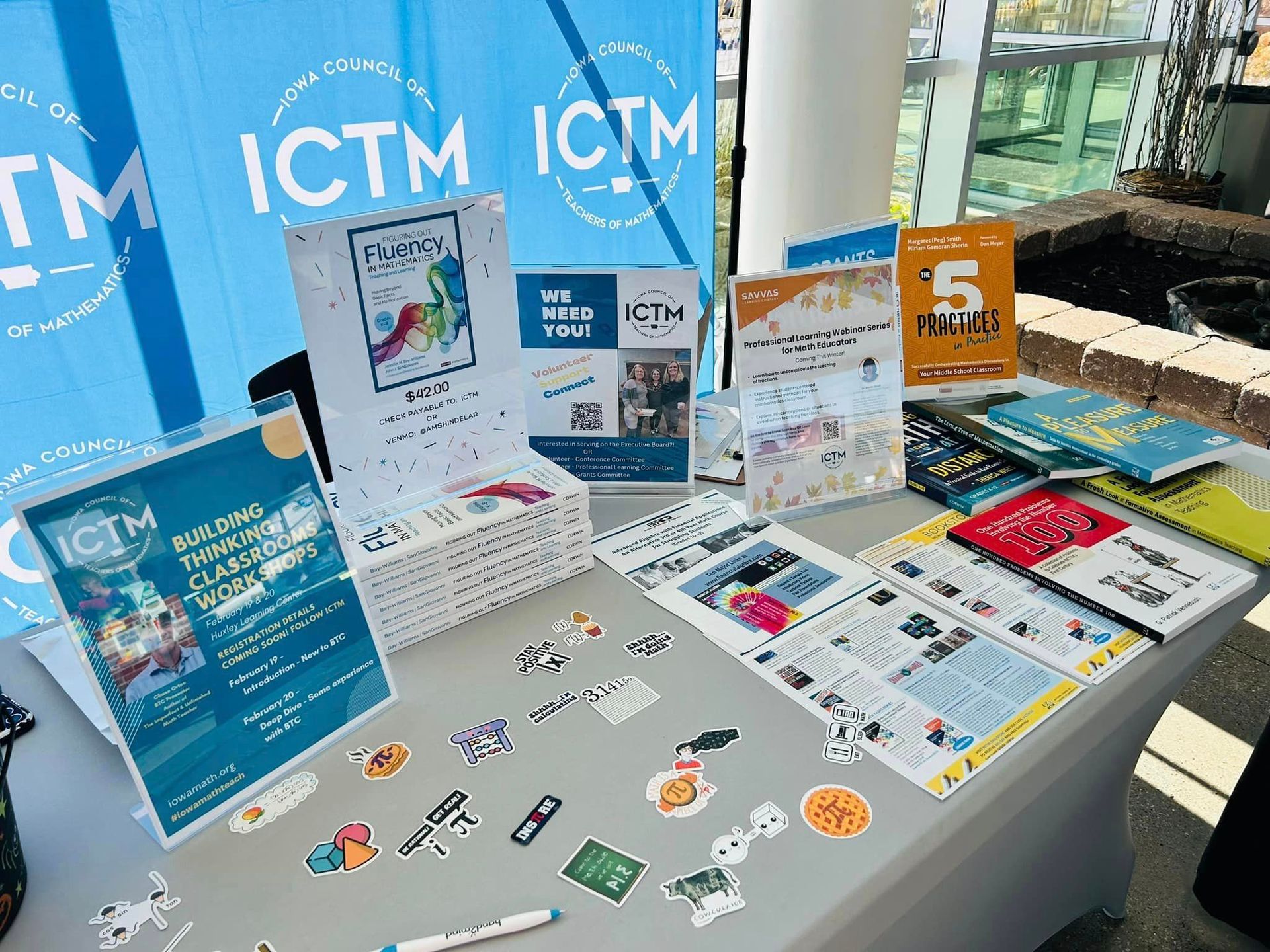
Slide title
Write your caption hereButton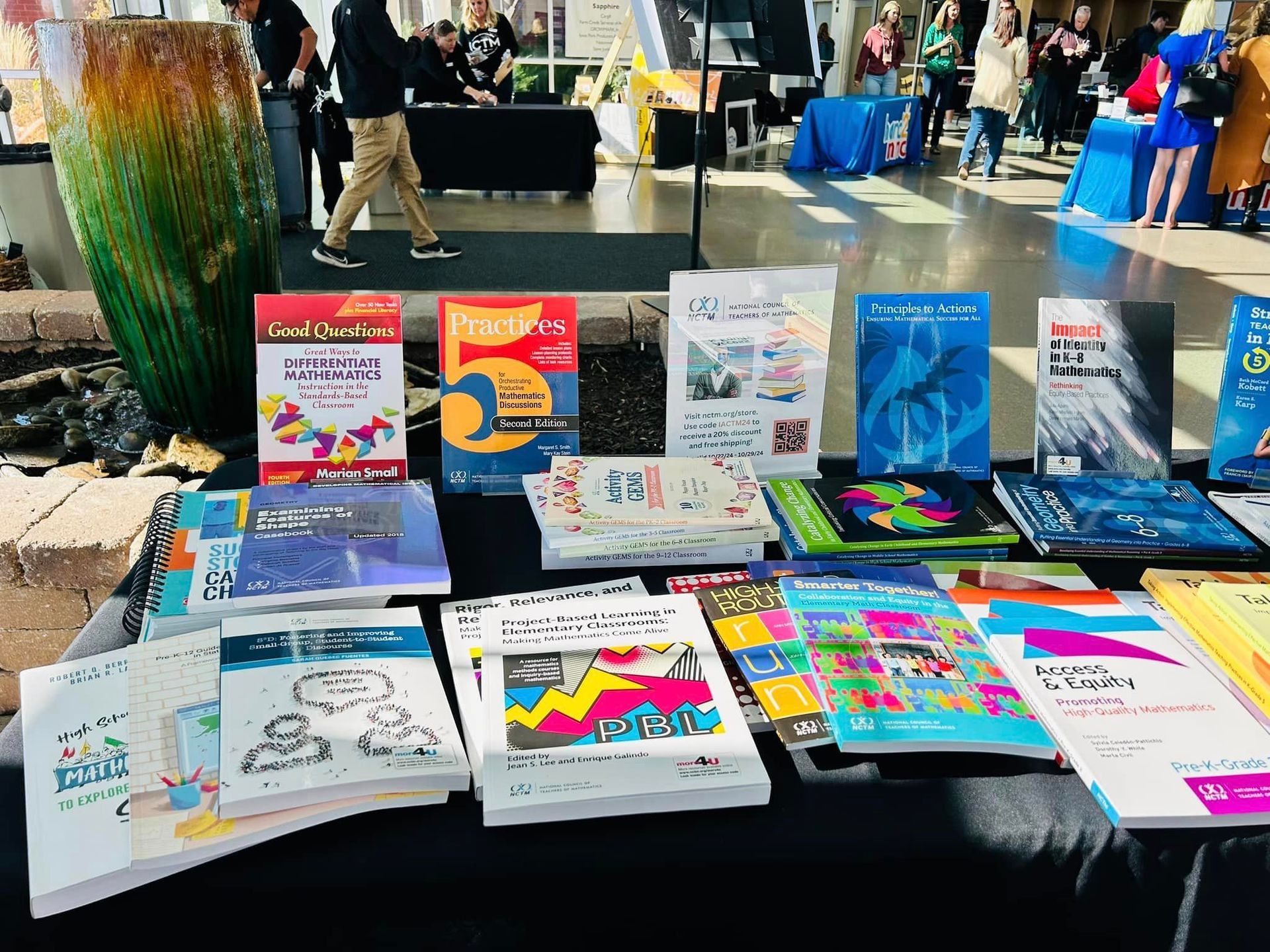
Slide title
Write your caption hereButton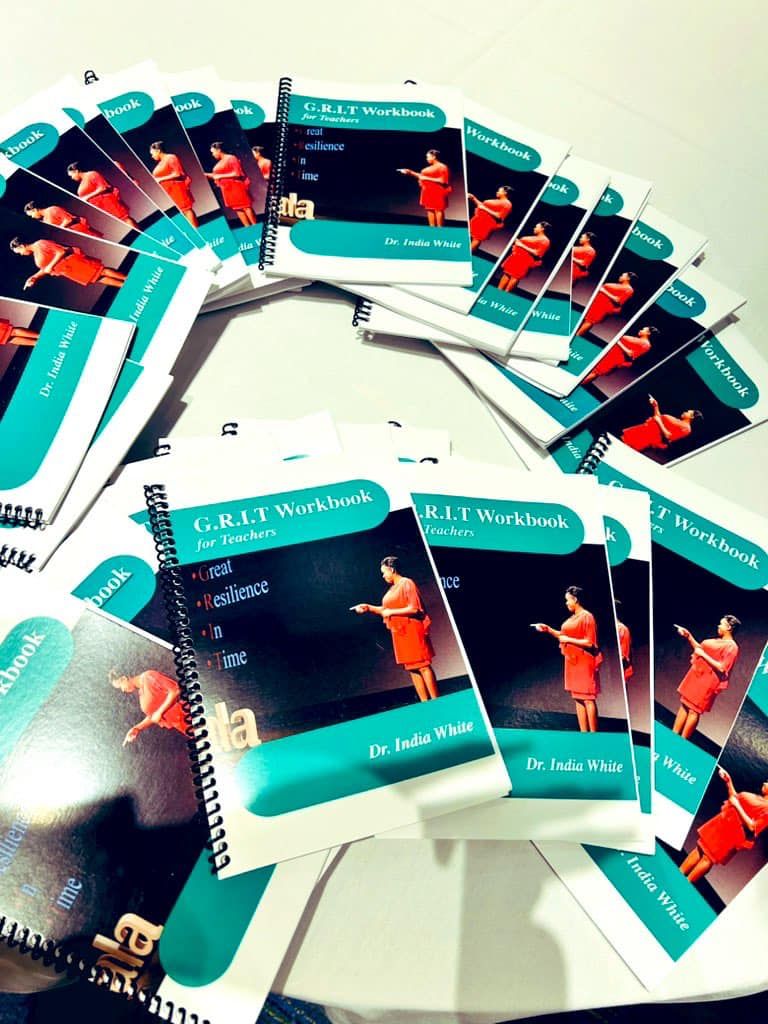
Slide title
Write your caption hereButtonSlide title
Write your caption hereButtonSlide title
Write your caption hereButtonSlide title
Write your caption hereButtonSlide title
Write your caption hereButton
Slide title
Write your caption hereButton
Slide title
Write your caption hereButton
Slide title
Write your caption hereButtonSlide title
Write your caption hereButton

By India White
•
February 11, 2025
Join us on the Let's Get Gritty Podcast with Dr. India White. On this show, we will repeat a show from the Grit and Equity talks Podcast with Dr. India White, where we walk through the recently released NAEP data from the National Report Card and speak about moving the needle forward. Listen on Spotify: https://podcasters.spotify.com/pod/show/india-white3 #grit #equity #naep #drindiawhite #nctm #ncsm #bwxme #math #teachers #students

By India White
•
February 11, 2025
🌟 Just wrapped up an incredible G.R.I.T. Training session with the amazing leaders from Imagine Schools! 💪✨ We took a deep dive into the G.R.I.T. framework, and I can't wait to see the results unfold! 🚀🙌 #drindiawhite #grit #imagineschools #tedx #nctm #ncsm #bwxme 🎉 (I don’t own music copyright

By India White
•
February 6, 2025
Thankful for Partnership and Recognition: A Shoutout to Dr. Matthew Joseph and X-Factor EDU Network I am incredibly thankful to partner with Dr. Matthew Joseph and the amazing leadership of the X-Factor EDU Network! It is truly an honor to collaborate with such a visionary leader who is dedicated to amplifying voices in education and creating spaces for impactful conversations. This month, I was deeply grateful to be mentioned in Dr. Joseph’s newsletter during Black History Month. His recognition means so much, not just for me, but for the work we are all doing to inspire and empower educators and students alike. You can check out the newsletter here: https://www.linkedin.com/posts/drmxj_stongertogether-activity-7291502796753809408-0zX3?utm_source=share&utm_medium=member_desktop&rcm=ACoAAAmqD2wBkz8Qc7EA0bvwxWyMJH2HykCUA-Y But beyond the shoutout, I’m even more excited about the opportunities ahead—including the chance to have a podcast on Dr. Joseph’s platform! Partnering with X-Factor EDU Network opens doors to share insights, engage in meaningful discussions, and continue championing grit, resilience, and equity in education. Thank you, Dr. Matthew Joseph, for your support, encouragement, and belief in this mission. Looking forward to what’s to come! 🚀 #StrongerTogether #GRIT #XFactorEDU #BlackHistoryMonth #EducationalLeadership #Thankful

By India White
•
February 6, 2025
Fired Up for FDLA/FAMTE Keynote: Let’s Build Grit Together! I’m beyond excited to take the stage as the keynote speaker at the FDLA/FAMTE Conference tomorrow! 🎤🔥 We’ll be diving deep into the power of G.R.I.T.—Great Resilience in Time—and how it transforms both educators and students. This opportunity means so much, and I’m grateful to everyone who has supported this journey. Grit isn’t just a concept; it’s a movement. It’s about growth mindset, resilience, self-efficacy, and time management, and it’s what drives success in the classroom and beyond. Let’s empower educators and students across the nation to push past obstacles and embrace productive struggle. Who’s ready to get gritty? 💪🏾 #Grit #DrIndiaWhite #TEDx #FDLA #FAMTE #Education #GrowthMindset

By India White
•
February 5, 2025
Had an Amazing Time at the Imagine Summit! I had a fantastic time speaking at the Imagine Summit on G.R.I.T.! 🙌🏽 We engaged in powerful breakout sessions, had meaningful discussions about NAEP data, and explored strategies to build **growth mindset, resilience, self-efficacy, and time management** in education. Thank you to everyone who participated and brought such great energy to the conversations! Let’s continue working together to bridge gaps and empower students through grit and perseverance. 💪🏽 #GRIT #ImagineSummit #Resilience #Education #GrowthMindset #EquityInEducation #drindiawhite

By India White
•
February 5, 2025
Building Grit in Teachers at the Imagine Leadership Summit I am beyond excited to be speaking at the Imagine Leadership Summit today, sharing insights on how we can build grit in teachers and empower them to foster resilience, self-efficacy, and growth in their students. 🌟 This summit is an incredible opportunity to collaborate with principals and education leaders who are committed to supporting and strengthening teachers. When we invest in teacher grit, we build stronger, more effective classrooms where students develop the perseverance to tackle challenges and achieve success. A huge thank you to the Imagine Summit leaders for this amazing opportunity! It’s an honor to be among such an outstanding lineup of speakers, including the incredible Kyle Pearce and Jon Orr. Join our sessions today and take GRIT with you—because when teachers grow in resilience, our students thrive! #GRIT #Teachers #Principals #DrIndiaWhite #NCTM #NCSM #ImagineSummit 😊

By India White
•
January 26, 2025
🌟 What an incredible time at the ICTM conference in Indiana! The lineup was amazing, and the energy was contagious! 🎉 Since I missed the snow back in Florida, I embraced it fully here and made my very first snow angel! ❄️ So grateful for the fun and gritty spirit of the ICTM rockstars! Huge thanks to Angela and every rockstar for this fantastic opportunity! 💙 #drindiawhite #grit #ictm25 #math #teachers #students #indiana #nctm #ncsm

By India White
•
January 25, 2025
✨ Today’s Grit training at Stockton Unified was absolutely amazing! We had a fantastic time connecting with friends and meeting some incredible rockstars in California. 🌟 I can’t wait to see how gritty Stockton becomes! Huge thanks to Andrew and the tribe for the opportunity to train your amazing leaders. Let’s all take grit with us as we move forward! 💪 #Grit #Leadership #StocktonUnified #drindiawhite #tedx #nctm #ncsm #nabse
Contact Us
Thank you for contacting us.
We will get back to you as soon as possible.
We will get back to you as soon as possible.
Oops, there was an error sending your message.
Please try again later.
Please try again later.
© 2025
India White, All Rights Reserved. Powered By Automation Links
Terms of Us | Privacy Policy | About
